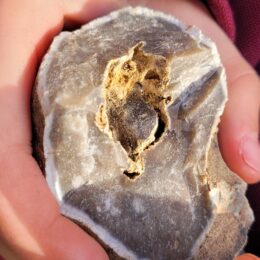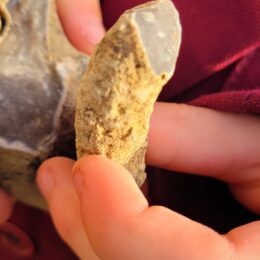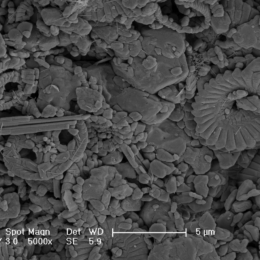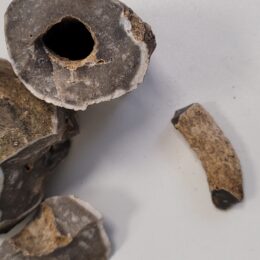Budding Palaeontologists Make Stunning Discovery
Two budding palaeontologists in Year 3, Max and Rafe, made a stunning discovery last weekend as they were digging during a play-day in the garden.
They brought the rocky find to Mrs Hills-Matthews to help them identify the unusually shaped stone, which, very unusually, had a removable process hidden inside.
The stone was very interesting – approximately 8cm in width, 4.5cm in depth, and around 12cm in length. Bets were placed that the rock may have been the top of a femur and the inner core the fossilisation of bone marrow, but Max and Rafe hoped it was a dinosaur tooth!
Mrs Hills-Matthews sent emails with photographs to the Geological Society and to Richard Selley, President of the Mole Valley Geological Society in the hopes the professionals may be able to solve the mystery.
First to reply was from Mr Selley who confirmed the boy’s find was indeed a fossil!
He wrote back and told us some very interesting facts:
The whole specimen is flint (Composed of silica, SiO2)
It used to be chalk (CaCO3)
Through a process called diagenesis, the chalk turned into flint around the outside
The inner core is the fossil
It is not a dinosaur, but a sea sponge which lived on the sea floor when lots of mud and chalk was deposited
The fossil is between about 100-66 million years old!
It is a find as most of the fossils in chalk are tiny and with a powerful electron microscope you can see things like calcareous algae called coccolithophoridae (see illustration)
But very occasionally, you can find marine fossils such as sea sponges like this.
Corals, bivalves, gastropods and sea urchins can be discovered, and if you are very lucky, marine reptiles such as ichthyosaurs and plesiosaurs too.
So, it seems Dome Hill Peak, where the fossil was found, may well have been underwater millions of years ago.
Well done boys for your very exciting find, keep digging!
Back to all news








